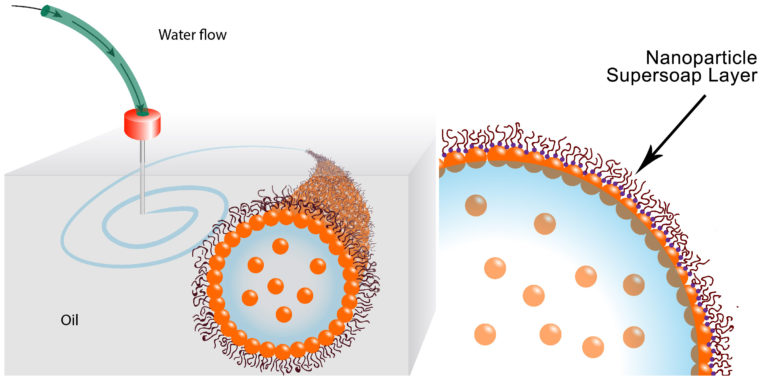Researchers at the Department of Energy’s Lawrence Berkeley National Laboratory have 3D printed liquid structures using a modified Qidi X-one 3D printer.
The researchers say the novel technique has a number of potential applications in areas such as flexible “liquid electronics,” medical research and chemical synthesis.

Modifying the X-one 3D printer
The 3D printed threads of water are between 10 microns, twice the width of a human red blood cell, and 1mm thick.
Tom Russell, a visiting faculty scientist in Berkeley Lab’s Materials Sciences Division, said the X-one 3D printer was crucial for printing liquids at the micron scale, allowing researchers to “place threads of water anywhere we want in three dimensions.” The X-one injects threads of water through a needle, creating liquid tube structures suspended in a container of oil.
To achieve this the researchers use a modified Qidi X-one 3D printer. The X-one’s original print head is replaced by a syringe and needle, which extrudes water into a small container of oil placed on the X-one’s print bed. A custom software program, written by Joe Forth, a postdoctoral researcher in the Materials Sciences Division, enables the X-one’s use in this application.
Water supported by gold particle and polymer ligand layer
A surfactant formed of a polymer ligand and gold particles allows the water to form stable structures. Water is mixed with gold particles which are attracted to polymer ligands in the silicone oil. When water is injected into the oil the ligands attach to the gold nanoparticles in the water, forming a surfactant that researchers are calling a “supersoap”.
Surfactants, “surface active agents”, lower the surface tension between two liquids. The supersoap surfactant is a flexible layer of polymer ligands attached to gold particles, which forms on the surface of the water. The flexible layer contains and prevents the water from breaking apart.
The flexibility granted by the supersoap “means we can stretch water into a tube, and it remains a tube. Or we can shape water into an ellipsoid, and it remains an ellipsoid. We’ve used these nanoparticle supersoaps to print tubes of water that last for several months.”

Liquid electronics for flexible devices
Russell believes that the 3D printed liquid material could be used for the construction of flexible, stretchable devices. Researchers also believe the liquid material could be used limit the flow of certain molecules, potentially enabling new ways of separating molecules, or building new compounds. Russell explains,
“It’s a new class of material that can reconfigure itself, and it has the potential to be customized into liquid reaction vessels for many uses, from chemical synthesis to ion transport to catalysis,”
The material was developed by Russell and Forth, along with scientists from Berkeley Lab and other institutions.

MIT’s rapid liquid 3D printing similarly suspends liquid material in another liquid. At Design Miami, the process was used to produce rubber-like bags and lamps, with the potential to create large scale consumer items like furniture.
A paper titled “Reconfigurable Printed Liquids” detailing the specifics of the 3D printing method discussed in the article is published online in Advanced Materials journal. It is co-authored by Joe Forth, Xubo Liu, Jaffar Hasnain, Anju Toor, Karol Miszta, Shaowei Shi, Phillip L. Geissler, Todd Emrick, Brett A. Helms and Thomas P. Russell.
Keep up to date with the latest 3D printing processes. Subscribe to the 3D Printing Industry newsletter, follow us on Twitter and like us on Facebook.
Vote for the 3D printing Academic/research team of the year in the 2018 3D Printing Industry Awards.
The 3D Printing Jobs Board is now live. Post a job or advance your career in 3D printing now.
Protolabs is sponsoring the 2018 3D Printing Industry Awards design competition. Enter now for the chance to win a Wanhao Duplicator 9 3D printer.
Featured image shows a close up of 3D printed water suspended in oil. Image via Berkeley Labs.

